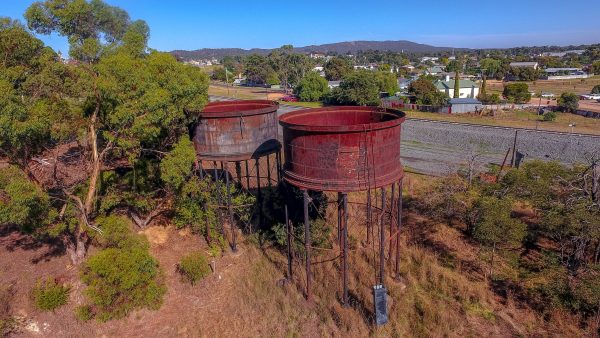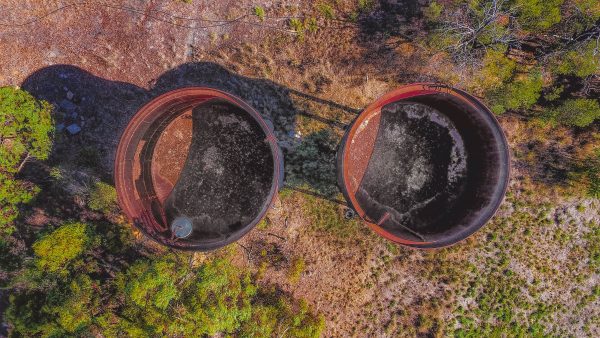Rusty water tanks remain from a gold mining past
Anyone who has known me for a while knows that I love ‘rusty stuff’, you know what I mean, the stuff that is scratched, dented, falling apart and generally past its use by date.
If I can, I will incorporate it into my back garden in one form or another.
Unfortunately though, these water tanks, left over from the Ararat’s steam driven transport past though are perhaps a little big for me to re-purpose. Certainly getting them home could be problematic.
Located in western Victoria, Ararat was founded in 1857 after gold was discovered nearby and quickly grew into a prosperous mining town with the railway arriving in 1875, connecting Ararat to Melbourne.
This boosted Ararat’s growth again and it became an important railway junction, with lines branching off to Stawell, Portland, and Hamilton. The town’s station, built in 1888, is a fine example this Victorian-era expansion and remains a local landmark.
Unfortunately as with many booms, this one faded. As gold mining declined, Ararat transitioned to agriculture and became a regional centre with the railway continuing to play a vital role in the town’s economy, transporting goods and passengers.
Today, Ararat remains connected to Melbourne by regular V/Line passenger services and continues to be a popular rest stop for commuters on a Melbourne – Adelaide road trip.




Leave A Comment